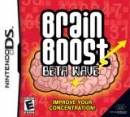I have seen quite a bit of
"Sony copied Nintendo's motion controller" can't they make something that's not a rip off!
Smile, Gamers: You're in the Picture
By NOAH ROBISCHON
Published: November 13, 2003
Correction Appended
RICHARD MARX, a 34-year-old astronautical and aeronautical engineer, has been spending a lot of time lately pretending to be Harry Potter. His wand is made from parts of a hotel clothes hanger and has a brightly colored ball on one end. But when he waves it, Dr. Marx says, it begins to glow and emit a distinctive hum in a TV monitor across the room.
By moving the wand in a circle, he can produce a trail that turns into a ring of fire on the screen. By flicking the wand toward the TV, he can make a fireball sizzle across the monitor. Other geometric shapes conjure tornadoes or make the player invisible. ''I actually had my son draw up a list of spells he thought would be good,'' Dr. Marx said.
Don't put in an emergency call to the Ministry of Magic just yet. Dr. Marx, a special-projects manager for research and development at Sony Computer Entertainment America, is only recounting his exploits with EyeToy, a miniature camera he invented that attaches to the PlayStation 2 and translates body movements into a video game. Peripheral devices for video-game consoles generally do not sell well, but more than one million of these set-top cameras have been sold in Britain since they were introduced there in July.
Last week EyeToy was released in the United States with a suggested price of $49.99. The camera is packaged with a dozen free mini-games known collectively as EyeToy: Play, including Kung Foo, in which players swat away tiny ninjas that swarm across the screen like mosquitoes, and Wishi Washi, in which contestants clean a series of windows before the timer runs out.
With the controller out of the picture, EyeToy levels the playing field that separates inexperienced gamers from enthusiasts, which means parents can finally win a few rounds. And the innate goofiness of seeing players projected into the game on the TV screen makes watching nearly as much fun as Wishi Washing.
Even so, such simple pastimes may not even hint at EyeToy's potential. The Harry Potter-like magic duel, for example, is still a prototype. And EyeToy's base technology was developed for far more scientifically advanced missions than ninja fighting. The same video sensors are already used to track schools of jellyfish in Monterey Bay; one day they might be used to help NASA perform outer-space repair jobs, or to remotely clean up nuclear waste.
In the future, the EyeToy technology is also likely to be used for making video games even more immersive.
At Sony's research and development lab in Foster City, Calif., on the northern fringe of Silicon Valley, several EyeToy projects are under way. A hover boarding game allows the player to speed through a course by leaning his head forward or to bank a sharp turn by shifting to one side. Add a colored ball in each hand, and the player can perform midair stunts by rotating his arms.
Yet EyeToy is more than simply a replacement for the joystick. ''It was the No. 1 design rule: don't just replace the controller function with something you do on the camera, because that won't be anywhere near as fun,'' said Phil Harrison, executive vice president for development at Sony Computer Entertainment Europe. ''And who would have thought that cleaning windows would be considered a game play experience?''
Dr. Marx prefers to view the device as a supplement to traditional button pushing. Imagine a stealth action game in which a player peeks around a corner by moving his head, and then uses the controller to jump out and engage an attack.
Another teaser that has yet not made it out of the EyeToy lab is a mock-up of the futuristic computer operated by Tom Cruise's detective character in the movie ''Minority Report.'' Two summer interns, fresh from seeing the film, decided to mimic that interface on EyeToy. Instead of juggling images or data by gesturing with the sleek black gloves worn by Mr. Cruise's Detective Anderton, Dr. Marx holds a pair of spongy balls known as ''the clams.''
To grab a photo and drag it across the TV screen, he squeezes a clam and swings his arms through the air. Positioning both hands on the corners of the photo, Dr. Marx clicks the clams, expands the frame and rotates it sideways on screen.
This sort of tool has applications beyond the PlayStation 2, and Sony's Vaio laptop computer division has already expressed interest in the prototype.
page 2
But before these concepts become reality, Sony will have to convince video game players and developers in the United States that EyeToy is more than a novelty. While more than 20 companies have requested the tools for developing EyeToy games, Mr. Harrison said, none have committed themselves to making any. One reason is that peripherals have had only marginal success, and game makers want to be sure that EyeToy is a commercial winner before creating titles for it.
''You know if you make a PS2 game you could sell 24 million copies,'' says Edward Williams, a video game industry analyst at Harris Nesbitt Gerard. ''Whereas with EyeToy, you know only a limited number of people will be able to play it.''
But there are signs that EyeToy will escape the fate of past peripherals. The add-on has exceeded expectations in Europe, and Logitech, the maker of EyeToy's camera component, announced a record second-quarter profit attributed partly to the product's brisk sales there.
''The funny thing about EyeToy is that the underlying technology was made in America, it was designed in Europe and everybody thinks it's Japanese,'' said Dr. Marx, who has championed his creation since he joined Sony Computer Entertainment America's research unit four years ago.
The unit serves two main purposes: to outline big-picture interactive gaming concepts that better harness the PlayStation 2's technology, and to help game developers conceive concrete uses for the console. When Dr. Marx joined the research team, no one was taking advantage of the console's video input prospects. Indeed, while the PlayStation 2 had a U.S.B. port to which other devices could connect, no software had been written that would turn it on.
To show off some of the hardware's potential, Dr. Marx put together a demo called the ''medieval chamber.'' He attached a camera to the PlayStation console, and then wrote a program that would translate the movements of a sword in his hand into images on the TV screen. Although it relies on a single camera, the sword on the screen moves in three dimensions.
''We can do that because we know the size of the objects in the screen,'' Dr. Marx said. ''When it leans toward the screen it gets fatter at the top and skinnier at the bottom, and we can calculate that.''
Dr. Marx's 3-D imaging know-how is rooted in Stanford University's Aerospace Robotics Laboratory, where he researched his thesis. The lab's top focus is on building command-controlled machines like the Mars Rover. But Dr. Marx found that improving a robot's sensors was more productive and interesting than delving into the mechanics of control -- and easier to raise funds for.
In 1996, Stanford received financing from the Monterey Bay Aquarium Research Institute, and Dr. Marx turned his attention to equipping submersible robotic vehicles with eyes. He mounted a pair of stereo cameras on a vehicle dubbed the Otter (Ocean Technology Testbed for Engineering Research). The dual sensors allowed the team to create a video mosaic of the ocean floor, enabling pilots to move the Otter by pointing and clicking on a mapped destination.
The robot could also focus on a specific spot, a shellfish hidden inside a crevice, for example, and adjust its position to compensate for underwater current changes so it could to maintain focus -- an exhausting task that the pilot used to do manually. The cameras were also useful for auto-tracking creatures like sea turtles and jellyfish, an application still in use today.
Dr. Marx then joined a start-up company and applied his research to a videoconferencing product that followed a lecturer around a room. When the design-software developer AutoDesk acquired the company, he shifted to a 3-D camera project intended to help consumers with home remodeling. The research stirred interest on the business conference circuit but never gained traction in any broadly used application, and the division soon folded.
Then in 1999, while attending the annual Game Developers Conference, Dr. Marx got a glimpse of the PlayStation 2. While other developers were captivated by the powerhouse graphics, Dr. Marx was more interested in the unheralded image-processing potential of the console's 128-bit chip.
''I saw that talk, went and got my resume and asked if I could submit it to their research group,'' he said.
Game developers are notoriously finicky when it comes to trying out new interfaces. And it was not until Mr. Harrison, the Sony development executive and a former colleague from the research unit, took up the cause on behalf of the European studio that EyeToy became a real prospect. Sony Computer Entertainment Europe is now developing a music-based EyeToy title called Groove in which players dance to songs by Madonna, Elvis Presley and the Jackson 5, scoring points for accuracy and style.
Dr. Marx is hoping his three sons will take to Groove. ''I don't like to see them in front of the TV for hours,'' he said. ''I like this because it gets them up and moving around like they would outside.''
Photos: A HIT IN EUROPE -- Richard Marx, who developed the EyeToy camera for Sony, demonstrates how it translates body movements to inject a player into a video game. (Photo by Peter DaSilva for The New York Times)(pg. G1); NO JOYSTICK REQUIRED -- The EyeToy camera, below, comes with 12 games. In Keep Ups, the player tries to keep a soccer ball aloft; Kung Foo involves swatting ninjas that swarm across the screen. (pg. G6)
Correction: November 14, 2003, Friday An article in Circuits yesterday about a Sony engineer who developed a camera-and-sensor technology for the PlayStation 2 video console misspelled his surname. He is Richard Marks, not Marx.
http://www.nytimes.com/2003/11/13/technology/smile-gamers-you-re-in-the-picture.html?pagewanted=2
example :
At Sony's research and development lab in Foster City, Calif., on the northern fringe of Silicon Valley, several EyeToy projects are under way. A hover boarding game allows the player to speed through a course by leaning his head forward or to bank a sharp turn by shifting to one side. Add a colored ball in each hand, and the player can perform midair stunts by rotating his arms.
What released last year:


you can bring technology to a company , but convincing the CEO's to support it is another thing
when Nintendo made Motion Controll's something that the Industry could support. Some CEO's and many of the industry see Motion Controll's for what they are not Gimick's but something that HAD value back in 2003, as it does in 2010
Sony Did'nt Copy, they were just Late because the CEO's did not concentrate on it's application's,
I think Now some of those very same CEO's will be kess likely to ignore some of the technology's that people bring up in R&D in the future

I AM BOLO
100% lover "nothing else matter's" after that...
ps:
Proud psOne/2/3/p owner. I survived Aplcalyps3 and all I got was this lousy Signature.



















































